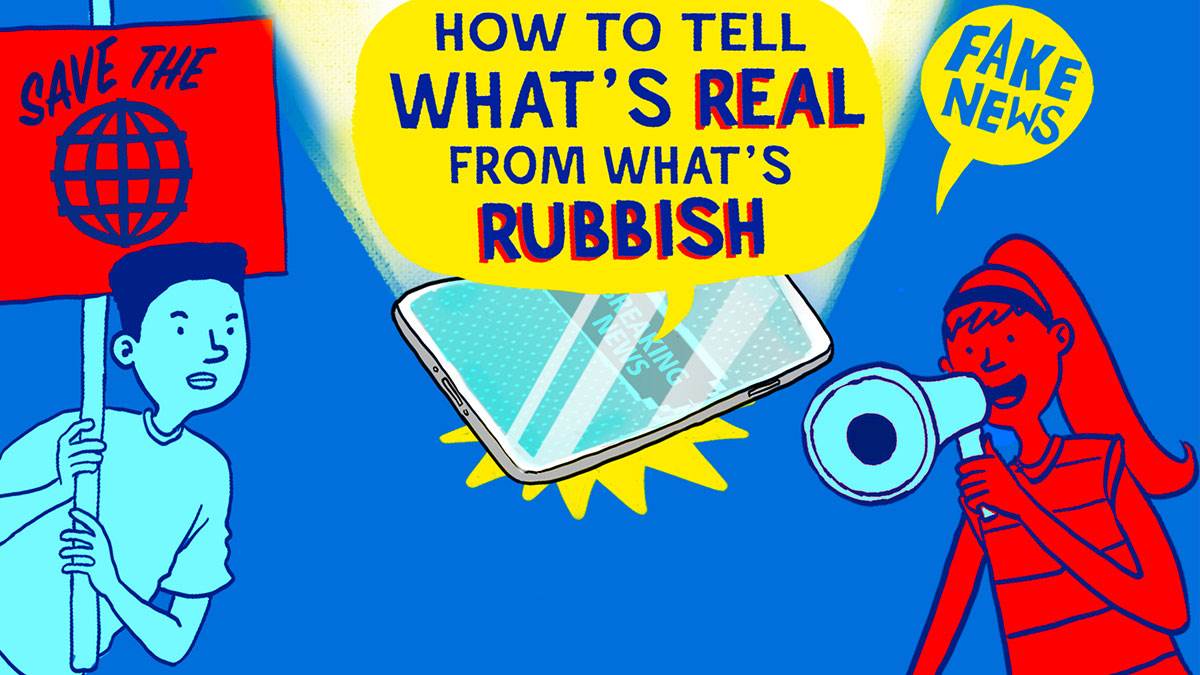Tips for kids on identifying fake news from journalist Nick Sheridan
Published on: 06 January 2022 Author: Nick Sheridan
The world can be extra confusing now, with so-called "news" more accessible than ever before, whether it's through social media or an article link your gran pings over on the family WhatsApp. But what should we believe? What can we trust? And how can children work out what is real from what's fake?
 Illustration by David O’Connell from Nick Sheridan's book Breaking News
Illustration by David O’Connell from Nick Sheridan's book Breaking News
Hiya! I’m Nick Sheridan and I’m a news journalist – that just means that I go on telly and radio and tell people what’s happening in the world around them. I don’t mean boring things, like what’s on my shopping list or how your granny’s false teeth fell down the loo – I mean really exciting things like rockets blasting off into space, herds of donkeys getting loose on motorways and gangs of criminals smuggling themselves into art galleries inside enormous Victoria sponge cakes.
Every story is different, and that’s why I LOVE my job – I never know what’s going to come around the corner (especially when it’s a herd of stampeding donkeys).
Sometimes though, it can be quite difficult for normal people to make sense of the news. And these days, it can be SUPER difficult to know if the story we’re reading even happened in the first place! That’s because of what we call “FAKE NEWS”. And “FAKE NEWS”, like a leaky pen or a puppy who has drunk too much water, can make a huge mess everywhere. And it’s been around for THOUSANDS of years – even the Ancient Greeks made up fake news sometimes.
People make up fake news for lots of different reasons – they might want to trick us into believing something that isn’t true, they might want to paint a particular type of person as dangerous or silly. Or they might be spreading fake news by accident.
So, how can we tell the truth from the lies? The fake from the fact? The real from the rubbish?
Never fear, in my career as a journalist, I’ve figured some quick tricks to spot the spoofers:
- Use your common sense – the little voice inside your brain that says ‘That doesn’t sound very likely’ or ‘Surely that can’t be true?’. If that little voice thinks something isn’t right, then you should be extra careful.
- Look and see who is posting the information. If the article or video doesn’t say who wrote or made it, ask yourself why they don’t want you to know. Might it be that what they’re saying isn’t true?
- What emotions is the article or video making you feel? If it’s making you sad, angry or even a bit scared, ask yourself why. Is the video meant to make you angry? Angry about what? Angry about who? Sometimes Fake News is spread to make us dislike other people or groups of people. Some Fake News will try to blame a particular person or part of society for problems the world is facing. Ask yourself ‘Is that true?’ and ‘Is that fair?’
- If a photo or video says it was taken in a certain place at a certain time, use the skills that you’ll learn in this book to look for clues. If the person who has posted the photo or video says it was taken this morning, then why does it look old and grainy? If the person who posted it says it was taken in London, then why can you see the Eiffel Tower in the background? Small clues like this can help journalists decide whether news is real or fake.
Topics: Features





